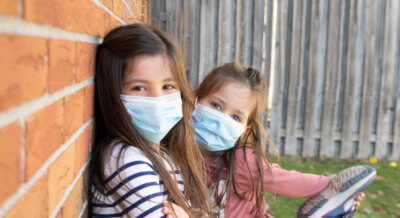Personal protective clothing (PPC) is an essential component of any clinic’s infection control program. Protective clothing, including gowns, jackets and lab coats, are designed to cover a uniform, street clothing and exposed skin. When used correctly, protective clothing provides healthcare personnel with effective protection against cross-contamination from exposure to blood and other body fluids1. It can also prevent microorganisms from spreading from personnel to patients2 and prevent personnel from bringing potentially infectious materials home on their clothing.
1. When should you wear protective clothing?
According to the CDC, healthcare personnel should wear protective clothing (i.e., gowns, jackets, lab coats, vests) to prevent contamination of street clothing and to protect the skin whenever there is a risk of exposure to blood and body fluids and other potentially infectious material.3 Work uniforms and street clothing are not made to protect against blood and fluid penetration and do not meet protective clothing standards.4
2. How much coverage should protective clothing provide?
The Occupational Safety and Health Administration (OSHA) Bloodborne Pathogens Standard requires that PPC have sleeves long enough to cover the forearms, a high neck, and be at least knee length.5
3. Where should protective clothing be worn?
Protective clothing should only be worn in areas where patient care and instrument processing are performed and in laboratory areas. All protective clothing should be removed before leaving these work areas and should never be worn to the washroom, reception area, personal offices, break rooms or outside the clinic.
4. What should you look for when choosing personal protective clothing?
According to the CDC6 , there are three factors to consider when choosing PPE:
- Type of anticipated exposure, such as touch, splashes or sprays, or large volumes of blood or body fluids that might penetrate the clothing, as well as the category of isolation precautions a patient is on.
- Durability and appropriateness of the PPE for the task. For example, does a gown need to be fluid resistant, fluid proof or neither.
- Fit. PPE must fit the individual wearer and it is up to the employer to ensure that all personal protective apparel is available in sizes that fit their personnel.
You may also want to consider how easy protective apparel is to put on (don) and take off (doff) without contaminating yourself and ensure that it is made of breathable fabric and does not restrict your movements. Keep in mind that protective gowns with an open back provide enhanced ventilation.
5. How often should you change your protective clothing?
Protective clothing should be changed as soon as it becomes visibly soiled by blood or other body fluids. Whenever possible, protective clothing should be changed between patients.
6. How can I prevent cross-contamination when removing personal protective clothing?
When removing personal protective clothing, whether reusable or disposable, you can minimize the risk of cross-contamination by turning the item inside out as you remove it so that the largest area that may have come into contact with infectious material remains on the inside.
7. Where should reusable personal protective clothing be stored when not in use?
If your office uses reusable personal protective clothing, a specific area must be designated for hanging it when not in use. To prevent cross-contamination, special care must be taken to ensure that personal items belonging to staff and patients are not hung or stored in that area.
8. Who is responsible for maintaining and laundering reusable protective clothing?
When an office chooses reusable PPC, the employer is responsible for maintaining and laundering it. Employees are not allowed to launder contaminated personal protective clothing at home. Therefore, the employer must choose to either supply the necessary machines and laundry products and have employees perform these tasks at the office or use an outside laundry service. But neither option is as simple as it sounds. In its Guidelines for Environmental Infection Control in Health-Care Facilities7, the CDC has established strict guidelines for both options:
- Employers who want employees to launder their personal protective clothing at the office are required to establish a detailed exposure control program for the employees.
- Employers who choose to use an outside laundry service must use a service that complies with OSHA guidelines.
9. Which is more comfortable: reusable protective clothing or disposable?
Although higher-quality reusable gowns may claim to offer good breathability, disposable gowns are made of much lighter materials. This makes them significantly more comfortable when worn over street clothing or uniforms.
10. Isn’t reusable protective clothing better for the environment?
Although some offices cite environmental concerns when choosing to use reusable PPC instead of disposable, many forget to consider that laundering reusable protective clothing requires transportation, electricity and water and exposes both the environment and personnel to the chemicals in laundry products.
Conclusion
When you consider the comfort, safety and convenience of disposable protective clothing from a trusted manufacturer provides reliable barrier protection while ensuring optimal breathability and comfort, as well as the considerable inconvenience and environmental impact of maintaining reusable protective clothing, the benefits of disposable PPC are clear.
To ensure that you and your staff are protected and comfortable in every situation, choose disposable personal protective apparel from a company with over 32 years of infection control expertise like Medicom.
Medicom offers a complete portfolio of protective apparel, including our SafeWear gowns and hipster jackets, as well as our AAMI PB70:2012 compliant gowns, isolation gowns, surgical gowns, overhead gowns, impervious gowns, thumbloop gowns and chemotherapy gowns, coveralls and sleeve covers, bouffant caps, shoe covers, beard covers and more.
Why healthcare professionals prefer Medicom protective apparel:
Medicom protective apparel provides reliable barrier protection and:
- Premium materials that keep wearer cool and comfortable
- Unique designs that provide customized fit and ease of movement
- Special features that ensure secure closure and easy donning and doffing
- A wide variety of styles, lengths, sizes, colours and fabric weights
- Consistent quality, durability and fit.
View the complete Medicom portfolio of protective apparel.
References
- Guidelines for Infection Control in Dental Health Care Settings, 2003; updated 2019.
- https://www.cdc.gov/oralhealth/infectioncontrol/faqs/personal-protective-equipment.html
- https://www.cdc.gov/oralhealth/infectioncontrol/faqs/personal-protective-equipment.html; accessed May 28, 2021.
- From Policy to Practice: OSAP’s Guide to the CDC Guidelines (2019 Edition), https://www.osap.org/store/ViewProduct.aspx?id=14472852
- https://www.cdc.gov/oralhealth/infectioncontrol/faqs/personal-protective-equipment.html; accessed May 28, 2021.
- Guidance for the Selection and Use of Personal Protective Equipment (PPE) in Healthcare Settings, https://www.cdc.gov/hai/pdfs/ppe/ppeslides6-29-04.pdf, accessed June 3, 2021.
- Guidelines for Environmental Infection Control in Health-Care Facilities, Recommendations of CDC and the Healthcare Infection Control Practices Advisory Committee (HICPAC), June 6, 2003, 52(RR10);1-42, updated July 2019, accessed May 31, 2021.



 English (US)
English (US)


